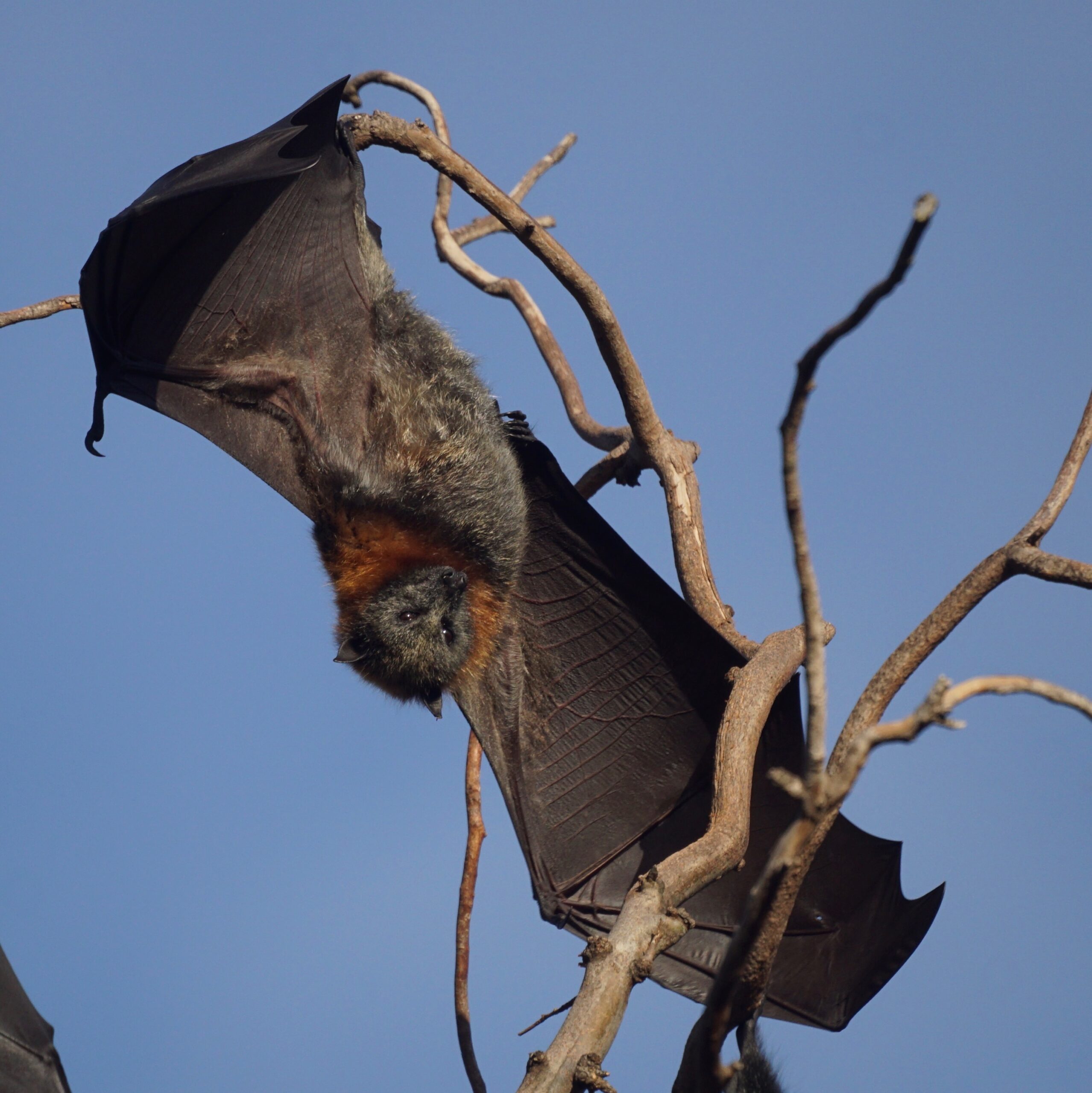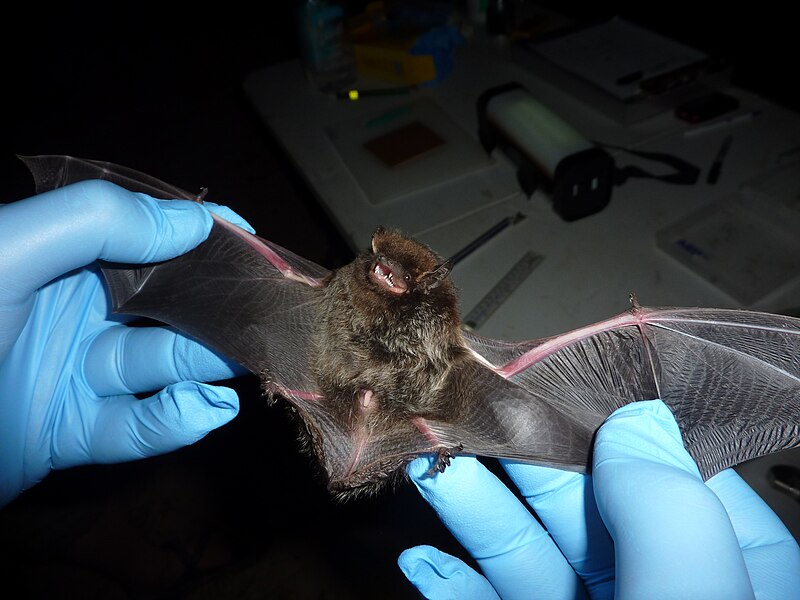“The best bat deterrent combines exclusion, sealing entry points, and using sensory-based repellents for long-term effectiveness.”
The best bat deterrent is one that combines various strategies to ensure long-term effectiveness in keeping bats away. A single method may not be sufficient, as bats can adapt to deterrents over time, so using a combination of exclusion techniques, physical barriers, and sensory-based repellents is key.
Effective deterrents make your home less appealing to bats by addressing their need for shelter, food, and a safe roosting spot. By implementing multiple approaches, you can create an environment that bats will want to avoid for good.
Effective Ways to Keep Bats Away from Your Home
Sealing Entry Points
One of the most effective ways to deter bats from entering your home is by sealing off potential entry points. Bats can squeeze through surprisingly small gaps—often as narrow as half an inch—making it crucial to thoroughly inspect your home for cracks, crevices, and loose shingles. Common areas to check include the edges of your roof, attic vents, chimneys, and spaces around windows or doors. By using materials like caulk, weatherstripping, or fine mesh screens, you can block these entryways and keep bats from finding their way inside.
It’s important to note that sealing should be done with care, especially if bats are already near your property. Be mindful of local wildlife regulations, as some areas have specific guidelines for protecting bats, particularly during their maternity season when young bats are unable to fly. Sealing entry points in early spring or late fall is often the best time, as bats are less likely to be roosting, making it easier to prevent them from gaining access in the first place.
Bright Lights
Bats are nocturnal creatures that prefer dark and quiet areas to roost, so bright exterior lighting can be a strong deterrent. Installing motion-activated or continuous bright lights around your home, particularly near common entry points like attics, rooflines, and chimneys, can make the area less appealing to bats. Floodlights, porch lights, or even string lights in areas where bats might try to settle can disturb their natural behavior and cause them to seek out darker, quieter environments elsewhere.
For best results, use lighting strategically to target the areas where bats might congregate, but avoid creating excess light pollution. Opting for energy-efficient, bright LED lights can help maximize the deterrent effect without wasting electricity. While bright lights won’t physically block bats from entering, they make your home much less inviting for roosting.
Ultrasonic Bat Repellents
Ultrasonic bat repellents are devices designed to emit high-frequency sounds that are inaudible to humans but highly irritating to bats. These devices work by creating an environment that is uncomfortable for bats to stay in, effectively deterring them from approaching or roosting near your home. Ultrasonic repellents are particularly useful in outdoor spaces or areas where bats might be scouting for a place to settle, such as attics, eaves, and barns.
When using ultrasonic repellents, it’s important to place them strategically near potential entry points or areas with high bat activity. While these devices are a humane way to deter bats without causing them harm, they are most effective when used in combination with other deterrent methods, such as sealing entry points and controlling insect populations. Consistent use can help keep bats away before they get too comfortable around your home.
Mothballs
Mothballs are a simple and inexpensive method to deter bats from roosting near your home. The strong, pungent odor of mothballs is highly unpleasant for bats, making them less likely to settle in areas where the smell is present. You can place mothballs in potential roosting spots, such as attics, eaves, or near entry points, to discourage bats from getting too close.
It’s important to remember that mothballs can lose their effectiveness over time, so they need to be replaced regularly. Additionally, they should be used with caution, especially if children or pets are around, as mothballs contain chemicals that can be harmful if ingested or inhaled in large quantities. When used properly, mothballs can serve as an effective deterrent, especially when combined with other preventive measures.
Essential Oils
Essential oils with strong scents, such as peppermint, eucalyptus, and cinnamon, can act as natural bat deterrents. Bats have a keen sense of smell, and these pungent oils create an environment that is unpleasant for them. To use this method, simply soak cotton balls or cloths in essential oils and place them near areas where bats might roost, such as attics, eaves, or around potential entry points.
Essential oils are a safe and eco-friendly way to deter bats, especially if you want to avoid chemicals. They are also easy to apply and reapply as needed. However, the effectiveness of essential oils can diminish over time, especially outdoors, so regular reapplication is important to maintain their potency. While this method may not be as powerful as others, it can be a great supplement to reinforce other bat deterrent strategies.
Wind Chimes or Reflective Objects
Wind chimes and reflective objects can be an effective, low-maintenance way to deter bats from approaching your home. Bats are sensitive to both sound and movement, and the unpredictable noise from wind chimes or the flashes of light from reflective items like aluminum foil or reflective tape can create an unsettling environment. These objects can be hung near common bat entry points, such as under eaves, around porches, or near attics, to discourage bats from getting too comfortable.
Reflective tape or objects like CDs, mirrors, or even foil can catch the light and create a constant movement that bats find disorienting. The combination of noise from the wind chimes and flashes from reflective surfaces makes it harder for bats to feel safe, encouraging them to move on to quieter, darker areas. This method is easy to set up and maintain, making it a great addition to other bat deterrent strategies.
Netting or Mesh Barriers
Netting or mesh barriers are a highly effective way to physically prevent bats from entering potential roosting areas around your home. Installing fine mesh or netting over openings like chimneys, vents, and other small gaps ensures that bats cannot find access points into your attic or walls. These barriers are especially useful for blocking hard-to-reach areas where bats might otherwise slip through undetected.
When using netting, it’s important to choose a durable material that can withstand weather conditions and is fine enough to block even small bats. Mesh barriers should be securely installed and regularly checked for any wear or gaps to ensure they remain effective. By combining netting or mesh with other deterrent methods like sealing entry points and using bright lights, you can significantly reduce the chances of bats roosting near or in your home.
Motion-Activated Lights
Motion-activated lights can be a powerful tool in deterring bats from approaching your home. Since bats are nocturnal and prefer to stay in dark, quiet areas, the sudden burst of light when a motion-activated sensor is triggered can startle and discourage them from getting too close. These lights can be installed around entry points, patios, or eaves to create an unpredictable, uncomfortable environment for bats.
The beauty of motion-activated lights is that they don’t need to stay on all night, reducing energy consumption while still providing an effective deterrent. When strategically placed near potential bat entry points, the quick flashes of light will make it hard for bats to feel secure in the area. This method works best when combined with other deterrents like sealing entry points or using ultrasonic repellents for a comprehensive approach.
Ammonia Soaked Rags
Ammonia’s strong, pungent odor is highly off-putting to bats, making it a simple yet effective deterrent. To use this method, soak rags in ammonia and place them around areas where bats might be roosting or exploring, such as near eaves, attics, or entry points. The smell of ammonia can create an unpleasant environment for bats, discouraging them from settling near your home.
It’s important to handle ammonia with care, as it can be harmful if inhaled or ingested by humans or pets in high concentrations. Make sure to place the ammonia-soaked rags in areas that are out of reach of children and animals, and replace them regularly to keep the scent potent. While not a long-term solution, ammonia-soaked rags can be a helpful part of a broader strategy to keep bats away from your property.
Predator Decoys
Bats are naturally wary of predators, and using plastic decoys of owls or hawks can create the illusion of danger. Hanging these decoys near common bat entry points like eaves, attics, or rooflines can make bats think twice about roosting nearby. Owl decoys with moving heads or reflective eyes are particularly effective, as they simulate real movement and seem more threatening to bats.
For best results, place predator decoys in visible spots around your property where bats are likely to fly by. While these decoys alone might not fully keep bats away, they are a useful addition to other deterrent methods like sealing entry points and using bright lights. Just be sure to periodically move the decoys to different areas, as bats might get used to them if they remain stationary for too long.
Related: What Is The Best Way To Get Rid Of Bats?
When to Call a Professional for Bat Prevention or Removal
While DIY methods can be effective in deterring bats, there are times when it’s best to call in the experts. Professional wildlife removal services can help you safely and humanely handle bat prevention or removal, especially when dealing with large colonies or hard-to-reach areas.
Here are some situations where a professional can make a difference:
- Persistent Bat Activity: If bats keep returning despite your efforts, a professional can identify and address the root cause.
- Large Bat Colonies: Removing a significant number of bats or managing colonies requires specialized equipment and knowledge to avoid harming the animals or breaking local wildlife laws.
- Challenging Entry Points: Professionals can seal difficult-to-reach entry points, such as those on rooftops or within chimneys, preventing future bat infestations.
- Bat Guano Clean-up: Bat droppings can pose health risks. Experts have the right tools and protective equipment to safely clean up guano and disinfect affected areas.
If bats are becoming more than just occasional visitors, professional help ensures that they’re handled safely and humanely, keeping both your home and the local bat population protected.
Conclusion
Keeping bats out of your home starts with understanding what attracts them and using the right deterrents to prevent them from settling in. While bats play an important role in controlling insect populations, you don’t want them roosting in your attic or near your living spaces. By using a combination of effective strategies—like sealing entry points, installing bright lights, and incorporating ultrasonic repellents—you can create an environment that is uninviting to bats.
It’s important to stay proactive when it comes to bat prevention. Regularly inspect your home for potential entry points and keep deterrents in place to ensure that bats don’t find your property appealing. If bats do become a persistent problem, it might be time to consult a professional for safe and humane solutions. With the right approach, you can enjoy the benefits of bats in your ecosystem while keeping them at a safe distance from your home.





